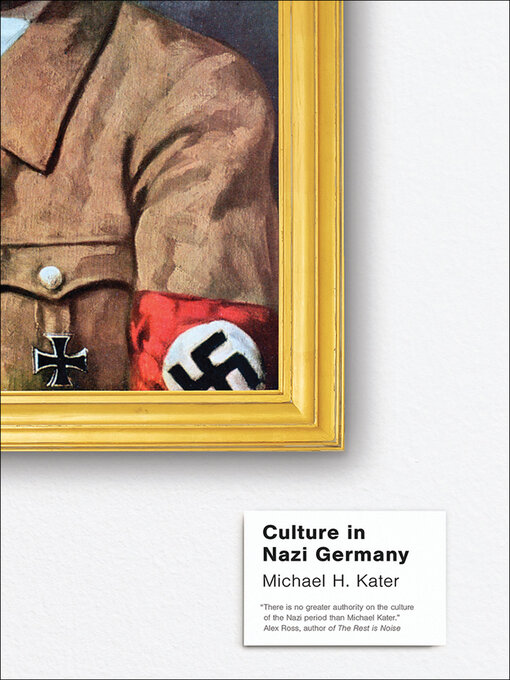- Careers
- Study Aids & Workbooks
- Language Arts & Writing
- Personal Finance
- Student Success
- See all student resources collections
Culture was integral to the smooth running of the Third Reich. In the years preceding WWII, a wide variety of artistic forms were used to instill a Nazi ideology in the German people and to manipulate the public perception of Hitler’s enemies. During the war, the arts were closely tied to the propaganda machine that promoted the cause of Germany’s military campaigns.
Michael H. Kater’s engaging and deeply researched account of artistic culture within Nazi Germany considers how the German arts-and-letters scene was transformed when the Nazis came to power. With a broad purview that ranges widely across music, literature, film, theater, the press, and visual arts, Kater details the struggle between creative autonomy and political control as he looks at what became of German artists and their work both during and subsequent to Nazi rule.
“Absorbing, chilling study of German artistic life under Hitler” —The Sunday Times
“There is no greater authority on the culture of the Nazi period than Michael Kater, and his latest, most ambitious work gives a comprehensive overview of a dismally complex history, astonishing in its breadth of knowledge and acute in its critical perceptions.” —Alex Ross, music critic at The New Yorker and author of The Rest is Noise
Listed on Choice's Outstanding Academic Titles List for 2019
Winner of the Jewish Literary Award in Scholarship
-
Creators
-
Publisher
-
Release date
June 24, 2022 -
Formats
-
Kindle Book
-
OverDrive Read
- ISBN: 9780300245110
-
EPUB ebook
- ISBN: 9780300245110
- File size: 5996 KB
-
-
Languages
- English
-
Reviews
-
Kirkus
Starred review from May 1, 2019
A much-needed study of the aesthetics and cultural mores of the Third Reich, with often surprising turns. Kater (Emeritus, History/York Univ.; Hitler Youth, 2006, etc.), a widely published scholar of the Nazi era, begins with the premise that "in order for a new Nazi type of culture to take hold, the preceding forms first had to be wiped out." These forms were those presumed to be "non-German" and, indeed, were largely Jewish or African: jazz, modernist art, anything smacking of the avant-garde-ism of the Weimar era. Joseph Goebbels was among many Nazi officials who took the lead in bringing music, film, architecture, and the like under the control of the regime. Though Hitler had a thorough cultural program in mind, his tastes were not always predictable or widely shared: He may have revered Wagner, but he wasn't much of a Beethoven fan even if, in 1934, Goebbels, always pressing for a "German" art, "cut down on the political crudities and embarked on a campaign of promoting serious music, beginning with a Beethoven cycle in February, followed by rich programs of music by Bach, Handel, Mozart, and Bruckner." Hitler, like so many readers of German fiction, was a fan of the pseudo-Westerns of Karl May, but he had no special interest in farming and so paid little attention to his regime's emphasis on "blood and soil" novels celebrating farming and the outdoor life. Nazi officials spared a few Jewish practitioners of the arts, but most suffered the same fate as Jews everywhere in the Reich. In a narrative rich in detail and documentation, Kater examines such matters as the plotlines of films in the wake of the defeat at Stalingrad, competition among various Reich figures and ministries to take the lead in cultural matters, the flight of German intellectuals such as Thomas Mann to the U.S., and the general mediocrity of Nazi art. "The relation between culture and tyranny is a complex one," Kater concludes. Indeed, and his book does much to make it comprehensible.COPYRIGHT(2019) Kirkus Reviews, ALL RIGHTS RESERVED.
-
Loading
Why is availability limited?
×Availability can change throughout the month based on the library's budget. You can still place a hold on the title, and your hold will be automatically filled as soon as the title is available again.
The Kindle Book format for this title is not supported on:
×Read-along ebook
×The OverDrive Read format of this ebook has professional narration that plays while you read in your browser. Learn more here.

